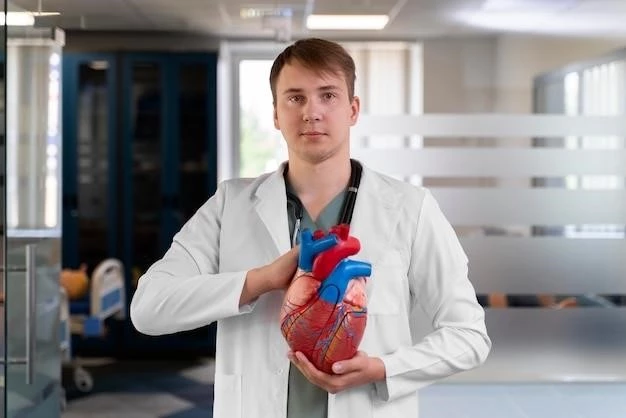Disease ౼ Distichiasis and Congenital Heart Anomalies
Overview of Distichiasis and Congenital Heart Anomalies
Distichiasis is a medical condition characterized by the presence of multiple eyelashes emerging from abnormal areas of the eyelid. This abnormality can cause irritation, redness, and in severe cases, corneal abrasions.
Congenital heart anomalies refer to structural defects of the heart that are present from birth. These may include malformations of the heart chambers, valves, or major blood vessels. These anomalies can range from minor issues to severe conditions affecting heart function.
While distichiasis primarily affects the eyelids, congenital heart anomalies impact the cardiovascular system. Both conditions can either be genetic or acquired during development. Understanding these disorders is crucial for timely diagnosis and appropriate treatment.
Understanding Distichiasis as a Medical Condition
Distichiasis is a rare eyelid disorder characterized by the abnormal growth of an extra row of eyelashes from the Meibomian gland orifices. This abnormality results from a mutation during embryonic development, leading to the aberrant growth of eyelashes.
Individuals with distichiasis may experience symptoms such as ocular irritation, tearing, foreign body sensation, and corneal damage due to the constant contact between the extra lashes and the cornea. The severity of symptoms can vary, with some patients being asymptomatic while others require medical intervention.
Diagnosis of distichiasis is typically made through a comprehensive eye examination, including slit-lamp microscopy to visualize the abnormal eyelashes. Genetic testing may also be conducted to identify the specific mutation responsible for the condition.
Treatment options for distichiasis aim to manage symptoms and reduce complications. Common interventions include manual plucking of the extra eyelashes, cryotherapy to destroy hair follicles, electrolysis, and surgical procedures like lid margin splitting; Patients with severe symptoms or corneal damage may require more aggressive treatment approaches.
Understanding distichiasis as a medical condition is essential for healthcare professionals to provide appropriate care and improve the quality of life for individuals affected by this rare eyelid abnormality.

Congenital Heart Anomalies
Congenital heart anomalies encompass a wide range of structural defects in the heart that are present at birth. These abnormalities can affect the walls, valves, or blood vessels of the heart, leading to impaired cardiac function. Common congenital heart anomalies include atrial septal defect, ventricular septal defect, tetralogy of Fallot, and transposition of the great arteries.
These anomalies can result from genetic factors, environmental influences during pregnancy, or a combination of both. Genetic abnormalities, such as chromosomal disorders or gene mutations, play a significant role in the development of congenital heart defects. Maternal conditions like diabetes, obesity, or exposure to certain medications or infections during pregnancy can also increase the risk of these anomalies.
Clinical manifestations of congenital heart anomalies vary depending on the specific defect and its severity. Symptoms may include cyanosis, rapid breathing, poor feeding, failure to thrive, and abnormal heart sounds. Diagnosis typically involves prenatal ultrasound screening, echocardiography, and other imaging modalities to assess the structure and function of the heart.
Treatment options for congenital heart anomalies depend on the type and severity of the defect. Interventions may range from medication and monitoring for milder cases to surgical procedures, such as open-heart surgery or catheter-based interventions, for more complex defects. Multidisciplinary care involving pediatric cardiologists, cardiothoracic surgeons, and other specialists is essential for managing congenital heart anomalies and optimizing outcomes.
Relationship between Distichiasis and Congenital Heart Defects
While distichiasis and congenital heart defects are distinct medical conditions affecting different parts of the body, there have been rare cases where individuals present with both disorders. Research suggests a potential link between distichiasis and certain genetic syndromes that are also associated with congenital heart anomalies.
Specific genetic mutations or chromosomal abnormalities may contribute to the development of both distichiasis and congenital heart defects in some individuals. These shared genetic factors can lead to the co-occurrence of these conditions within the same individual or within families.
Understanding the interplay between genetics and the manifestation of distichiasis and congenital heart defects is crucial for healthcare providers when evaluating patients with either condition. Family history assessment, genetic testing, and thorough examinations are essential in identifying potential associations and providing comprehensive care.
Further research is needed to elucidate the precise genetic mechanisms underlying the relationship between distichiasis and congenital heart defects. By unraveling these connections, healthcare professionals can enhance the management and treatment strategies for individuals affected by these complex conditions.
Symptoms and Diagnosis
Symptoms of distichiasis typically include ocular irritation, redness, tearing, sensitivity to light, and blurred vision. Patients may also experience a foreign body sensation due to the abnormal contact between the extra eyelashes and the eye surface. In severe cases, corneal abrasions or ulcers can develop, leading to pain and visual disturbances.
Diagnosis of distichiasis is primarily clinical, based on the observation of multiple rows of eyelashes along the eyelid margin. A comprehensive eye examination, including slit-lamp microscopy, helps visualize the aberrant eyelashes and assess their impact on ocular health. In some instances, genetic testing may be conducted to identify the underlying mutation responsible for the condition.
Congenital heart anomalies present with a range of symptoms depending on the specific defect. Common signs include cyanosis (blue discoloration of the skin), rapid breathing, poor feeding, failure to thrive, and abnormal heart sounds. Diagnosis involves prenatal ultrasound screening, echocardiography, and cardiac imaging to evaluate the structure and function of the heart.
Healthcare professionals employ a multidisciplinary approach to diagnose and manage distichiasis and congenital heart anomalies effectively. Early recognition of symptoms, thorough examinations, and appropriate diagnostic tests are critical in providing timely and accurate care for individuals with these conditions.
Treatment Options for Distichiasis and Congenital Heart Anomalies
Treatment for distichiasis focuses on managing symptoms and preventing complications associated with the abnormal growth of extra eyelashes. Common interventions include manual plucking of the extra lashes, cryotherapy to eliminate unwanted hair follicles, electrolysis for long-term hair removal, and surgical procedures such as lid margin splitting to correct abnormal eyelash growth.
Patients with distichiasis may require ongoing monitoring by ophthalmologists to assess the response to treatment and address any recurrent symptoms. In cases where corneal damage has occurred, prompt intervention is essential to preserve vision and prevent further complications.
Management of congenital heart anomalies varies depending on the type and severity of the defect. Treatment options range from medication to surgical interventions. Medications may be prescribed to improve heart function, control blood pressure, or manage symptoms. In more complex cases, surgical procedures such as open-heart surgery or catheter-based interventions may be necessary to repair structural defects or improve blood flow.
Long-term follow-up care is vital for individuals with congenital heart anomalies to monitor cardiac function, assess for any recurrence of symptoms, and optimize overall heart health. Collaborative care involving cardiologists, cardiac surgeons, and other specialists ensures comprehensive management tailored to each patient’s unique needs.
Prognosis and Management
The prognosis for individuals with distichiasis is generally favorable with appropriate management strategies in place. By effectively treating symptoms and monitoring for potential complications, most patients can experience improved comfort and reduced ocular irritation. Regular follow-up appointments with eye care specialists are essential to track the progression of the condition and address any treatment needs as they arise.
For individuals with congenital heart anomalies, the prognosis varies depending on the specific defect, its severity, and the timeliness of intervention. With advancements in medical and surgical techniques, many patients with congenital heart defects lead fulfilling lives with proper treatment and ongoing care. Prognosis may also be influenced by the presence of additional health conditions or complications that can impact long-term outcomes.
Effective management of both distichiasis and congenital heart anomalies requires a comprehensive approach involving healthcare providers from various specialties. Coordination of care, patient education, and personalized treatment plans are key components of successful disease management. By addressing both the symptoms and underlying causes of these conditions, healthcare teams can improve quality of life and long-term outcomes for affected individuals.
Conclusion
In conclusion, distichiasis and congenital heart anomalies represent complex medical conditions that require careful evaluation, diagnosis, and management. Distichiasis, characterized by abnormal eyelash growth, can lead to ocular discomfort and complications if left untreated. On the other hand, congenital heart anomalies involve structural defects of the heart that may impact cardiovascular function.
Understanding the relationship between genetic factors and the development of these conditions is crucial for providing optimal care to affected individuals. Treatment options for distichiasis focus on symptom management and may include various interventions to address abnormal eyelash growth. In contrast, congenital heart anomalies often require a multidisciplinary approach, ranging from medication to surgical procedures, to address the specific defects.
Prognosis and management of distichiasis and congenital heart anomalies are significantly influenced by early diagnosis, appropriate treatment, and ongoing monitoring. By collaborating with a team of healthcare professionals, patients can receive comprehensive care tailored to their individual needs, enhancing their quality of life and long-term outcomes.
Overall, continued research, clinical advancements, and patient education play key roles in improving the prognosis and management of individuals with distichiasis and congenital heart anomalies. Through a holistic and patient-centered approach, healthcare providers can make a positive impact in addressing these complex diseases and promoting the well-being of those affected.
